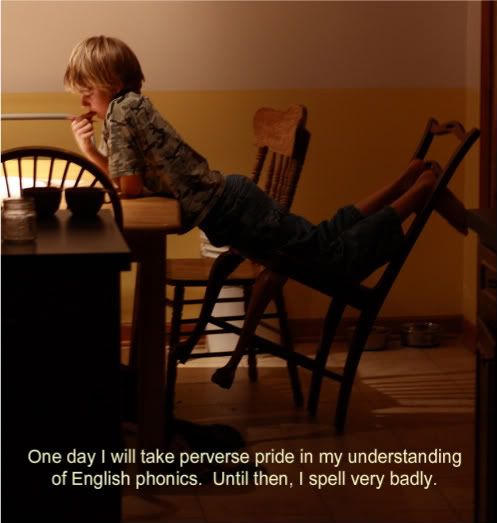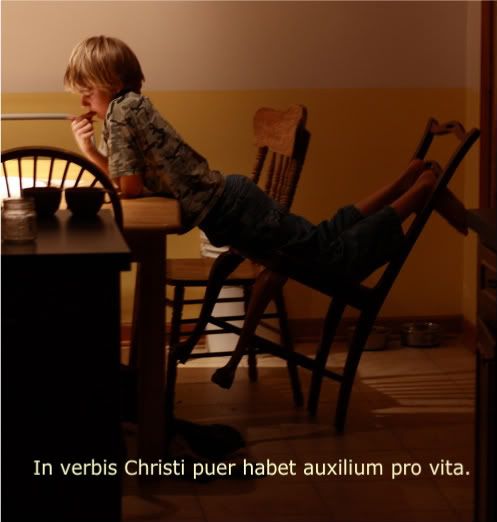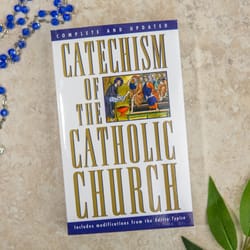
What on earth is “Word Study”? That’s what I wanted to know. Ignorance is no barrier to a woman with an excuse to buy books, so I took the plunge and ordered the MCP Plaid Word Study books as prescribed by Kolbe. It seemed like the kind of thing my kids might could use.
The pictures you see are different than the one currently showing in the Kolbe Store, and I don’t know what the story is on that. The ones above are what we have (ordered from Kolbe last spring), and if you click through, the pic takes you to the Amazon page. There are other editions, so if you enroll with Kolbe but purchase the book not from Kolbe, verify to make sure you’re getting hold of the book to match your course plans. My review is for the books you see here. Love that 1970’s decor, matches my kitchen.
So what is this “Word Study” thing? It’s the answer to people who look you straight in the face and tell you English is not a phonetic language. Well, yes it is, it’s just that we feel free to use the phonics rules of virtually every language in the known world over the past 1500 years, and don’t get around to updating our spelling when pronunciations change. Understandable, since English speakers never have all pronounced words the same way everywhere.
Sample Rule from Level F (6th Grade): The roots “cap”, “cept”, and “ceipt” mean “take” or “seize”. Capture = to take someone by force. [p.88]
Sample Rule from Level D (4th Grade): When “ed” is added to a base word ending in d or t, it stands for the “ed” sound. Other times “ed” will stand for the sound of d or t: They planted a tree. He cheered for the team. She jumped over the rope. [p.52]
–> Word study re-inserts method and understanding into the vast and varied rules of English spelling, so that you don’t live your whole life stuck in kindergarten, forever believing everything must be a “sight word”. [Or a sig-ha-tuh word.] The MCP books group words with similar rules, so that students see the logic in how they work. You’ll notice that Kolbe spends about ten minutes on Science, and whereas the 4th grade Language Arts category has a full seven different elements to it. (And I’m reviewing each item one by one.) If you the follow program, sooner or later you’ll end up learning to read and write.
How the book works. The books are two-color, consumable workbooks. Each page presents a rule of phonics, spelling, or vocabulary at the top of the page. Then there are a variety of activities to help students practice the rule. Every now and then there is a reading comprehension or composition exercise mixed in as well.
Can students self-teach? For the most part, yes. My kids work 98% unsupervised, and every now and again when I check their work I see that some disastrous phonics accident has occurred. But usually they can read the instructions and do the work completely on their own. Both kids are supposed to save this part of their homework for later in the day, and usually they sneak into it early, because it is fairly light work and they’d rather do this than tackle a harder subject.
Warning: The Picture Words Are A Mystery To Me. In the fourth grade book there are sometimes exercises where you look at a picture, guess the word it stands for, and use that information to complete the assignment. The girl and I stink at this. We just skip these. Maybe you don’t want us on your team for Pictionary.
What to buy?
- The student book is a consumable. You would not want to try to do the exercises on a separate piece of paper. This is the one book in Kolbe’s line-up that I’d not dream of trying to hand down to the next kid.
- I’ve never even considered that there was a teacher’s manual, let alone wanted to use it. I’d skip that unless you the teaching parent have a serious phonics disorder and your consultation with the Kolbe people or some other expert indicates the teacher’s manual would help you. Remember these are exercises your child can probably mostly do with no adult help.
- The course plans just divide up the book into pages. If you aren’t enrolled in Kolbe, don’t purchase them. They do include quarterly exams, but for the à la carte price, you could take ten minutes a quarter to quiz your child orally and call it good.
Do you really need to do this?
I made it all the way through grad school without ever studying phonics with this intensity. I was a natural reader, and had no difficulty with spelling. Other than a few technical terms, nothing in these books is news to me, it’s all stuff you just figure out from being a word person. But, I’m very glad my kids are doing these books.
Although they are reading well, spelling and advanced phonics is not something that just flows out of my unschooling heart on a consistent basis. I like that they are getting the intensive trickle. For my 4th grader, the focus on phonics strengthens her weakest area — she tends to hop over difficult words rather than slowing down and concentrating on them. For my 6th grader, I like that he is being pushed to master skills that come naturally to him, and I hope it will show up on his SAT scores. (Yes, I’m mercenary that way. Were you planning to send us college money? I didn’t think so.)
–> My intuition is that if you have a student with strong language skills, you could skip this and do fine. In many ways it might be more like daily vitamins than necessary medicine.
If you have a student struggling with spelling, reading, and vocabulary, these might be the skeleton of a program to help your child with specific strategies for mastering language skills. For my 4th grader, I would sooner drop assignments from another subject, so that she has time to work through her word study book. If she’s a strong reader, she can always catch up on her history facts another day.
[If you are working through a serious learning disability, ask a specialist and ask if this is in fact the type of help your child needs. The last thing you want to do is to drop $20 on 160 pages of pure agony. You’ve probably done that enough times already.]
And that’s all I know to report. What other questions do you have?












